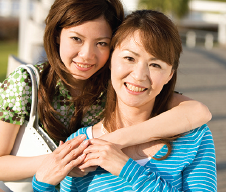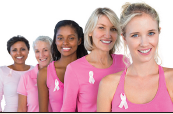Do you know the origin of the word hysteria? It comes from the Greek word hysterikos and the Greek idea that hysteria was unique to women and was caused by “disturbances of the uterus” (1).
For centuries, there has been some level of understanding that hormonal fluctuations during a woman’s menstrual cycle or perimenopause/menopause stir up a variety of issues. While these “symptoms” are actually quite normal, many women would love to get to the bottom of what’s going on in their bodies, maintain a more even flow of hormones or ease some discomforts. How can supplements play a role in this endeavor?
Menopause Survival Kit
You can’t talk about menopause without understanding hormones. The ovaries produce many hormones, but the main one is estrogen. Estrogen performs numerous roles throughout a woman’s life: it keeps the vagina moisturized, elastic and supplied with blood, stimulates breast tissue growth, signals the lining of the uterus to thicken during menstruation and preserves bone density (2).
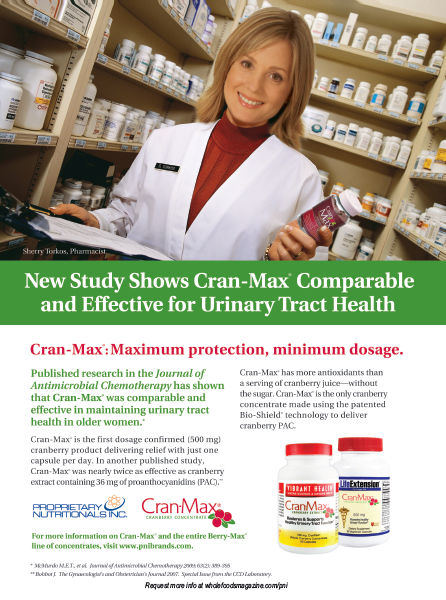 The ovaries also make progesterone and a small amount of testosterone. Progesterone helps make the lining of the uterus habitable for a fertilized egg, while testosterone plays a role in libido and maintaining bone mass (2).
The ovaries also make progesterone and a small amount of testosterone. Progesterone helps make the lining of the uterus habitable for a fertilized egg, while testosterone plays a role in libido and maintaining bone mass (2).
But during perimenopause, hormone production fluctuates and decreases intermittently, causing erratic menstrual periods and some unpleasant side effects like hot flashes, vaginal dryness and dampened libido. Ovulation and a woman’s monthly cycle stop completely once progesterone production reaches very low levels.
“It is normal for our physiology to go through the transition and changeable hormone fluctuations of perimenopause and the permanently lower hormones of estrogen, progesterone, DHEA and testosterone of menopause/postmenopause,” states Tori Hudson, N.D., professor, naturopathic physician, medical director of A Woman’s Time, and co-owner/director of education and product development at Vitanica, Tualatin, OR. “This is normal Mother Nature.”
Conflicting opinions on herbs. Many strategies for supplemental support during perimenopause/menopause focus on the hormones. “The hormonal fluctuations are a transitional period for women and require the proper support of the adrenal glands to ease menopausal symptoms,” states Marita Schauch, B.Sc., N.D., women’s health educator on behalf of Natural Factors, Monroe, WA. “The adrenal glands are key players in menopause and take over the production of sex hormones when the ovaries shut down. Adrenal-supportive herbs such as the adaptogens (e.g., rhodiola, ashwagandha, suma, holy basil, Siberian ginseng and schizandra) are gentle yet effective herbs to help support the underlying hormone production and ease that transition into menopause.”
But using herbs for menopause support is actually a topic where many diverse opinions come into play.
For instance, Michael Jeffers, president of Helios Corp., Santa Fe, NM, is not convinced that any herbs can boost estrogen levels and still be safe for women to take. He states, “If an ingredient is estrogenic, it is considered to be a risk and potentially unsafe by 100% of the companies we sell or offer EstroG-100 to.”
This viewpoint has legs, tracing back to the Women’s Health Initiative Study of 2002. In this study (The Estrogen-Plus-Progestin Study), sponsored by the National Institutes of Health, participants were given a combination hormone replacement therapy (HRT) to see whether the treatment’s benefits outweighed the risks. “The outcome was that a significant percentage of women in the active group did get cancer,” says Jeffers, and the trial was stopped prematurely in 2002.
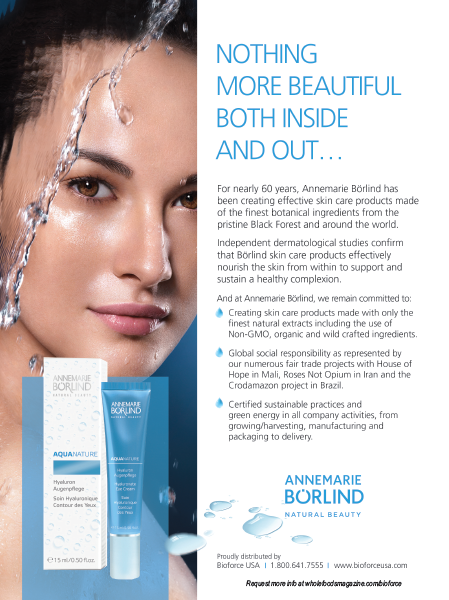 These results have stuck in the minds of shoppers. Says Jeffers, “Today, our customer base tells us if an ingredient is estrogenic or if the ingredient creates or boosts hormone activity, the risk to their consumers is similar to the HRT study results.”
These results have stuck in the minds of shoppers. Says Jeffers, “Today, our customer base tells us if an ingredient is estrogenic or if the ingredient creates or boosts hormone activity, the risk to their consumers is similar to the HRT study results.”
For these reasons, he feels ingredients in menopause support products should not try to boost estrogen levels, and strongly believes in a branded ingredient from his company. This trademarked ingredient combines water extracts of Phlomis umbrosa, Cynanchum wilfordii and Angelica gigas. “[EstroG-100] was specifically evaluated to prove the ingredient did not boost hormone activity or create estrone and estradiol,” he states. “The results were negative, and we also confirmed there was no binding affinity to the female receptor sites which are called ER-alpha and ER-beta.”
Neil E. Levin, CCN, DANLA, nutrition education manager at NOW Foods, Bloomingdale, IL, also likes the science behind this branded ingredient. “EstroG-100 has been shown to relieve most menopause symptoms without affecting estrogen receptors. It helps to relieve hot flashes, night sweats, temporary sleeplessness, nervousness and difficulty in maintaining a positive outlook related to menopause and is an excellent alternative to soy isoflavones and black cohosh,” he states.
Unfortunately, Jeffers believes an ingredient that offers these benefits without having estrogenic properties is not something retailers can assume is true of all herbs in the category. “We know of three ingredients in the marketplace today that are estrogenic, and maintain positive receptivity to one or both of the female receptor sites. This is not a good thing,” he believes.
Christopher Hobbs, Ph.D., L.Ac, of Rainbow Light Nutritional Systems, Santa Cruz, CA, also believes that retailers may want to thoroughly vet what they select for their shelves to support menopausal symptoms. “While a number of herbs have been cited as hormone regulators for reducing symptoms that might arise during the menstrual cycle or perimenopause or menopause, very few have solid scientific studies behind them to show efficacy and safety for this use,” he states.
And, Hudson says, “‘Supporting balanced hormone levels can be a statement that is misused way too often.”
She stands behind maca as an herb that “has been demonstrated in published research studies to support and actually affect select women’s hormones of perimenopause and menopause.”
But, Hudson thinks the science on black cohosh, red clover, St. John’s wort, Siberian rhubarb and others for affecting hormonal balance is less solid for balancing hormones. This doesn’t mean that she sees them as unsuitable for menopause support; in fact, she says, “they are quite effective at treating perimenopause and menopause symptoms.”
 Hudson adds, “Hormone balancing in and of itself is too often a catch phrase, and a naïve and uninformed and misleading approach to helping perimenopausal/menopausal women.”
Hudson adds, “Hormone balancing in and of itself is too often a catch phrase, and a naïve and uninformed and misleading approach to helping perimenopausal/menopausal women.”
Now to Hudson’s point, several herbs have research support for helping menopausal women. For instance, black cohosh is often used for hot flashes and other menopausal symptoms. But is it a phytoestrogen? The research on this topic is evolving.
“Black cohosh is an interesting botanical because even though it doesn’t appear to have phytoestrogen content (at one time researchers thought that it did), it does appear to have estrogenic effects as a selective estrogen receptor modulator (SERM),” states Cheryl Myers, chief of education and scientific affairs at EuroPharma, Inc., Green Bay, WI. She feels this is an important point, and one that distinguishes it from other herbs.
Though the exact mechanism of action may not be solid, Schauch states, “[black cohosh] has emerged as the most studied of the herbal alternatives to hormone replacement therapy for menopause symptoms.”
A classic study on black cohosh from 1982 involved a pool of 629 women with menopausal complaints; each received a liquid standardized extract of black cohosh at 40 drops twice per day for six to eight weeks (3). “As early as four weeks after beginning the therapy, a clear improvement in the menopausal ailments was seen in approximately 80 percent of the women. After six to eight weeks, complete disappearance of symptoms occurred in approximately 50 percent,” states Schauch. “Standardized extracts of black cohosh continue to be one of the most reliable herbal approaches to treating perimenopausal and menopausal symptoms.”
Myers is a strong believer that women do not need to ingest a boatload of this herb to see benefits. She states, “Researchers have found that a daily dose of 13 mg of quality, concentrated black cohosh provides effective, consistent and ongoing symptom relief” (4, 5), she says.
Myers’ choice of the word “quality” is key, as Hobbs says that while black cohosh has “some solid research” behind it for benefitting women in many ways, retailers should get their supply from ethical companies that regularly check to make sure the ingredients they receive are not adulterated or misbranded in any way. “Black cohosh is often adulterated with a similar Chinese species where little research supports its long-term safety and efficacy for relieving symptoms associated with menopause,” Hobbs explains.
Hobbs, and many others interviewed for this story, also recommend chaste tree (Vitex agnus-castus) to be part of a woman’s menopause toolkit.
Gina Rivers-Contla, national science educator at Host Defense Organic Mushrooms, Olympia, WA, says that women have been eating this herb for centuries to help with menopause symptoms, and she feels several studies have been published supporting its safety and efficacy.
Levin explains that chaste tree supports healthy endocrine function by affecting pituitary signaling, which influences “the supply of luteinizing hormone that helps control progesterone production.” Levin says the end result is that the herb helps with maintaining healthy levels of prolactin.
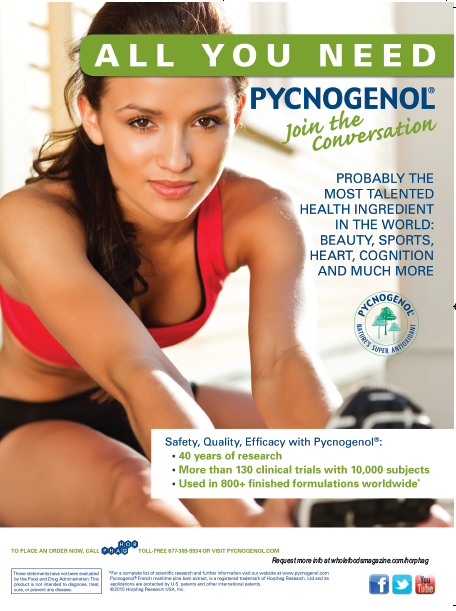 David Winston, RH (AHG), president and founder of Herbalist & Alchemist, Washington, NJ, points out that while herbs are used in combination in most herbal traditions, “If I had to choose a single herb for relieving menopausal hot flashes and night sweats, it would be chaste tree. Even better would be chaste tree, combined with black cohosh, dang gui/dong quai (it enhances pelvic circulation and helps relieve vaginal dryness) and supportive herbs such as blue vervain (for menopausal anxiety) and night blooming cereus (used by the eclectic physicians for menopausal hot flashes, headaches and depression).”
David Winston, RH (AHG), president and founder of Herbalist & Alchemist, Washington, NJ, points out that while herbs are used in combination in most herbal traditions, “If I had to choose a single herb for relieving menopausal hot flashes and night sweats, it would be chaste tree. Even better would be chaste tree, combined with black cohosh, dang gui/dong quai (it enhances pelvic circulation and helps relieve vaginal dryness) and supportive herbs such as blue vervain (for menopausal anxiety) and night blooming cereus (used by the eclectic physicians for menopausal hot flashes, headaches and depression).”
Several experts also point to dong quai, which while as Hobbs says, has less clinical trial data on it, “is still worth recommending because it is one of the world’s most widely revered herbs for easing symptoms associated with the woman’s reproductive cycle such as fatigue, dryness, and perhaps hot flashes.”
For some time, dong quai was thought to cause estrogenic effects, “but that has been disproved,” Levin states.
He says that soy isoflavones, which are phytoestrogens, are beneficial for women’s and cardiovascular health. But, he notes that this type of phytoestrogen not only helps to balance the types and ratios of estrogens in a woman’s body, but also supports overall wellness and longevity.
As for the safety issue, Levin believes, “Plant estrogen compounds are far weaker than human or animal-derived hormones or their synthetic counterparts, making the plant-derived ones much safer and giving them the ability to buffer either high or low levels of the actual hormones to maintain balance. The safety data for plant (phyto) sources is much greater than for the animal or synthetic sources.”
Another option in this category is the antioxidant, French maritime pine bark extract. One branded form, Pycnogenol from Horphag Research, Hoboken, NJ, has been the source material for several trials studying its effect on women for menopause support.
For instance, one study involved 70 perimenopausal women who took the supplement (50 mg) or a placebo twice daily for eight weeks. The researchers found that Pycnogenol decreased the severity of hot flashes, decreased bloating, improved vaginal dryness, improved mood swings and more (6).
 Says Victor Ferrari, chief executive officer at Horphag Research (worldwide exclusive supplier of Pycnogenol), with U.S. headquarters in Hoboken, NJ, “Pycnogenol can certainly be dubbed a “Lady’s Health Best Friend,” as it truly offers a comprehensive range of women’s health benefits.”
Says Victor Ferrari, chief executive officer at Horphag Research (worldwide exclusive supplier of Pycnogenol), with U.S. headquarters in Hoboken, NJ, “Pycnogenol can certainly be dubbed a “Lady’s Health Best Friend,” as it truly offers a comprehensive range of women’s health benefits.”
Other favorite menopause-support herbs mentioned by those interviewed for this piece include licorice (thought to lower estrogen levels and increase progesterone levels), ginkgo biloba (known to improve blood flow throughout the body and brain, which supports healthy cognitive function), green tea, St. John’s wort and lemon balm. There’s also valerian for sleep support, GABA or lavender extract and/or L-theanine for calmness, lion’s mane or rhodiola for memory support and many more, says Hudson. “But, the concept is to take a foundational product in addition to the symptom specific product,” she believes.
Beyond herbs. Moving beyond herbs for menopause support, Myers points out that omegas—especially omega-7 from sea buckthorn—may be an important go-to supplement for women who are experiencing vaginal dryness and atrophy (7).
Mark J. Kaylor, M.H. C.N., Ph.D., founder of Radiant Health Project, Marietta, GA, says bee propolis is also important for menopause support, especially for hot flashes, night sweats and irritability. He says Brazilian red bee propolis offers aglycone isoflavonoids, which “are much more bioavailable and retained for considerably longer than other isoflavonoids.”
As for other support during perimenopause and menopause, Hudson says, “One supplement that gets you a whole lot of bang for the buck is a high-quality fish oil; general others include calcium/magnesium/vitamin D.”
Monthly Support
Moving to an earlier stage in a woman’s life, cramping, bloating and other symptoms feel like par for the course during menstruation for many women. But, perhaps it doesn’t need to be.
Some of the strategies for menopause support may also have some crossover here, too. Says Mary Bove, N.D., medical educator at Gaia Herbs, Brevard, NC, “Menstrual health is connected to menopausal health, and those same aforementioned herbs can be used to support both phases.”
Rivers-Contla agrees, noting, “Hormonal fluctuations are a reality of every woman’s lifetime. While we sometimes think of PMS discomforts and menopausal discomforts being opposite ends of the spectrum, both are a result of hormonal fluctuations.”
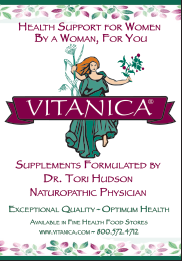 Schauch is big on adrenal support for both menstruating and menopausal women. “When the adrenal glands are taxed, this can cause both estrogen and progesterone levels to be imbalanced, where there is more estrogen than progesterone, causing a condition known as ‘estrogen dominance,’” she explains. This condition can cause premenstrual syndrome (PMS), heavy periods and cramping in menstruating women, Schauch states.
Schauch is big on adrenal support for both menstruating and menopausal women. “When the adrenal glands are taxed, this can cause both estrogen and progesterone levels to be imbalanced, where there is more estrogen than progesterone, causing a condition known as ‘estrogen dominance,’” she explains. This condition can cause premenstrual syndrome (PMS), heavy periods and cramping in menstruating women, Schauch states.
Levin points out that estrogen dominance can occur in either PMS and menopause, and that “phytoestrogens, natural progesterone and substances that affect pituitary signaling influence hormone levels and are all relevant to both phases of women’s natural cycles.”
He adds that women going through perimenopause (when hormone levels can drop dramatically) may have quite significant PMS issues, making PMS–menopause crossover issues even more important to discuss with shoppers.
Hudson agrees: “There are indeed many women who have perimenopause and PMS symptoms co-existing…and treating both conditions concurrently is the most successful.”
What might benefit women going through perimenopause, or dealing with PMS, or both?
Suzanne Munson, M.S., vice president of product development and compliance, Fairhaven Health, LLC, Bellingham, WA, says re-evaluating some lifestyle issues might be step one. “Lifestyle factors, such as limiting exposure to endocrine-disrupting chemicals, are recommended for women of all ages, as this disruption of endocrine function can result in hormone imbalances that cause uncomfortable symptoms in all life stages,” says Munson.
Bove adds that “good nutrition during all phases is an investment in long-term overall health,” and this includes nutritional support for a healthy heart and bones.
In addition, Myers believes “there are some excellent supplemental options for women dealing with PMS and cramping,” and one she calls out first is chasteberry (vitex).
Hobbs also likes this herb for PMS support: “Although simplistic, vitex is the PMS herb, with many clinical studies and centuries of human use behind it.”
Myers says that it is not a phytoestrogen, but it does help support even hormone levels thereby reducing headaches, cramping, bloating, breast tenderness, mood swings, and irritability.
Hobbs adds that “Vitex is known to work by regulating progesterone levels, reducing prolactin and modulating follicle-stimulating hormones and perhaps other hormones.”
“With chasteberry, more doesn’t necessarily mean better,” says Myers. In one study, 162 women took 0, 8, 20 or 30 mg of chasteberry extract for three menstrual cycles. In the end, the 20- and 30-mg groups made out the best, with better symptom support than the placebo and low-dose groups. But there was not much difference between the 20- and 30-mg groups in terms of overall benefits (8).
Black cohosh is another herb that may have broader appeal outside menopause support shoppers. Says Winston, “Black cohosh has been used by Native Americans for painful menstrual cramps for millennia and it can be combined with other antispasmodic herbs such as black haw (Viburnum prunifolium) or the closely related cramp bark (Viburnum opulus), motherwort or Chinese herbs such as Cyperus/Xiang Fu, White Peony, Dang Gui (Dong Quai), Ligusticum Root/Chuan Xiong to enhance uterine circulation and relieve discomfort.”
|
Select Women's Health Products EuroPharma, Inc.: Menopause Relief, Tri-Iodine, Vitamin D3 Chewable, Omega-7 Sea Buckthorn Extract (clinically studied SBA24), PMS Relief, P-5-P/Mag, PomXtra. |
Rivers-Contla says other herbs may also be so helpful: “Research indicates that the saponins found within the herb shatavari (Asparagus racemosus) may be supportive of the endocrine system, which affects the production of hormones that help to regulate human response to stress and mood swings. Red reishi mushroom (Ganoderma lucidum) is a promoter of normal blood flow, and contains triterpenoid compounds that may support the body’s balanced production of hormones.”
Evidence also suggests that French maritime pine bark extract has benefits in women with cramping during menstruation (9). In one study, 116 women took Pycnogenol or a placebo and those using the extract experienced less pain and needed less pain medication that the placebo group.
Commenting on the findings, Ferrari states, “Pycnogenol’s natural anti-inflammatory properties can naturally soothe the discomfort associated with menstrual symptoms, as well as alleviate cramping and abdominal pains without side effects.”
Don’t forget about the basics for menstrual support. Myers says vitamin B6 (as P-5-P form) and magnesium are helpful for those with cramping and fluid buildup, “and are absolutely the right ones for anyone suffering from PMS symptoms and cramping.”
Another approach, Hudson says, is to focus on the brain. She believes when a woman experiences PMS, it may be caused by neurotransmitters that are not responding properly to hormonal changes happening during the menstrual cycle. She feels targeting neurotransmitters with supplements like l-tryptophan, 5-HTP, SAMe, GABA and others may be beneficial.
She isn’t the only one that talks about the neurotransmitter connection. Michael Mooney, director of science and education at SuperNutrition, Oakland, CA, states that vitex may be beneficial to women with PMS issues because it “calms” the neurotransmitter serotonin (10) and “ups” the neurotransmitter dopamine (10), while it supports progesterone’s “calming” effects (11–14). “These balancing effects can improve the lives of women of all ages, including menopausal women,” he explains.
Mooney adds that vitamin B6 (pyridoxine) supports serotonin (15) and dopamine production (16). He cites a study involving 630 women who took B6 daily. Dosages of 100–150 mg reduced PMS discomfort for about 66% of the women, while dosages of 160–200 mg of vitamin B6 reduced PMS discomfort for about 79% of the women. “Notably, 40 mg had no significant effect, so optimal dosing is an important consideration, says Mooney (17).
Hudson also believes balancing “chronic prostaglandin imbalance and reducing pro-inflammatory pathways with daily supplements is key (EPA fish oils, magnesium and ginger), but then also addressing acute menstrual cramps (research on ginger, fenugreek powder, valerian and niacin) are most compelling.”
Feminine hygiene. Women who experience vaginal dryness and/or sensitivities should be aware of natural/organic feminine hygiene products. According to Susie Hewson, B.A. (Hons); PGCE; FRSA, international sales and marketing director at Natracare, Greeley, CO, “The vulva is sensitive and can be easily irritated by irritants in everyday products and that sensitivity can lead to the skin breaking down and vulval eczema developing.” Vaginal dryness is often associated with vulval eczema and hormonal disruption.
Her solution is to avoid anything that exacerbates the situation like harsh chemical washes and synthetic materials and “replacing them with organic and natural materials free from harsh chemicals and synthetics will ease the problem.” This includes tampons and pads during menstruation.
She believes shoppers should look for feminine hygiene products made with 100% cotton, chlorine-free pulp and materials totally free from petroleum super-absorbents and dyes. “Compare this to regular tampons, which generally are made from 100% synthetic fibers and/or a combination of largely synthetic fibers blended with some conventionally grown GMO cotton which is routinely sprayed with pesticides, herbicides and fungicides,” says Hewson.
Her firm conducted studies with UK and Canadian gynecologists about allergic feminine irritation and its causes. “It became clear that conventional synthetic materials and harsh chemicals used in sanitary products, including wipes and douches, were having an impact on women’s health and the health of their vulval skin,” says Hewson.
Fertility Support
During family planning is a prime time for women to support their health and that of an unborn baby with vital nutrients for healthy fetal development.
Tackling the first issue, a good first step is to make sure that the nutritional bases are covered. Says Munson, “Fertility is a reflection of overall health, so any steps a couple takes to improve their overall health (including taking vitamin, mineral and herbal supplements) can improve their fertility. And, specifically, there is a large amount of researching pointing to the benefits of antioxidant supplements for protecting egg and sperm health.”
Even after this need is met, many women looking for extra fertility support do not have an easy time pinpointing the best product for nutritional support. It is often difficult to know why some people take longer to conceive than others.
“Some herbs that can be effective for boosting fertility include rhodiola, especially with women who may have an underlying low thyroid or amenorrhea,” says Schauch. “Vitex is another herb that is helpful in stimulating the release of luteinizing hormone (LH) from the pituitary gland so it will indirectly raise or modulate progesterone levels, which is also useful for improving fertility.”
Rivers-Contla says one shouldn’t be surprised at vitex. “By studying ethnobotany from various cultures, we have seen the same herbs used in both fertility and menopausal formulas, because the nutrients within these herbs may encourage balanced hormone production that is appropriate for the stage of life the woman is currently in,” she states.
She believes that this herb encourages normal prolactin production. Elevated levels have been linked to infertility. Says Rivers-Contla, “Human clinical trials have shown that infertile women with luteal phase defect who supplemented with vitex were more likely to become pregnant than the control group who received no vitex supplementation.”
Women with polycystic ovary syndrome (PCOS) may be interested to hear that a branded maitake mushroom extract (Maitake SX-Fraction from Mushroom Wisdom Inc., East Rutherford, NJ) benefitted women trying to conceive in two clinical studies. Kaylor says that women with this condition often have impaired fertility. “In one of the studies, the SX-Fraction was more helpful to the women trying to get pregnant than the leading pharmaceutical remedy used for PCOS,” he states. “Interestingly, the leading drug and the SX-Fraction appeared to have a synergy of actions benefiting women that either of the two did not work for alone.”
Jamie Schapiro, chief marketing officer at Premama, Providence, RI, also talks about PCOS, noting that myo-inositol may help. He says that this carbohydrate has a similar structure to a B-vitamin and is found naturally in most body cells. “According to clinical trials performed in Europe, women with PCOS that took myo-inositol supplements showed significant improvement in ovulatory function and egg quality,” he states.
One study found women with PCOS taking the supplement (2 grams, twice daily) had better quality eggs (19).
Meanwhile, Mooney believes CoQ10, a potent antioxidant, helps “improve egg viability by protecting them from free radical damage.” He says one study found 600 mg of CoQ10 per day improved egg quality and fertilization rates in women ages 35-43 (20).
Hudson also has numerous specific uses for herbs and nutrients in terms of fertility support: “To support regular ovulation and ovarian function the research supports the use of chaste tree, rhodiola, black cohosh, myo-inositol and d-chiro inositol…To improve ovarian function and ovarian reserve, there is DHEA. To support failed IVF and fertilization rates, we have research on melatonin.”
A few experts here point out that fertility isn’t just about females; men may also need nutritional support. For instance, Catherine Adams Hutt, Ph.D., R.D., CFS, Sloan Trends, Aubrey, TX/Alexandria, VA and scientific advisor to the Choline Information Council, states, “Choline is essential for sperm health, motility and count.”
Following conception, numerous nutrients are key for proper fetal development, many of which were covered in last month’s kids’ health feature. Space only permits a short rundown here.
• DHA is essential for proper brain, nerve and eye development.
• Folic acid is key for nerve development and for avoiding neural tube defects.
• Sufficient iron stores are needed for fertility and for creating an adequate blood supply during pregnancy.
• Choline, says Adams Hutt, is important at all life stages. “It is essential for pregnant and lactating women in order to support brain and eye development in the fetus, and support improved memory and IQ for life,” she believes.
• Schapiro says “myo-inositol is less known in the prenatal community,” but is key for maternity wellness.
• Vitamin D3 and vitamin A are important for a healthy pregnancy.
• Calcium is key for proper bone development. WF
|
|
References
1. http://www.merriam-webster.com/dictionary/hysteria
2. http://www.menopause.org/for-women/sexual-health-menopause-online/changes-at-midlife/changes-in-hormone-levels
3. Stolze H. An alternative to treating menopausal complaints. Gyne. 1982;3:14-16.
4. Schellenberg R, Saller R, Hess L, Melzer J, Zimmermann C, Drewe J, Zahner C. Dose-Dependent Effects of the Cimicifuga racemosa Extract Ze 450 in the Treatment of Climacteric Complaints: A Randomized, Placebo-Controlled Study. Evid Based Complement Alternat Med. 2012;2012:260301. doi: 10.1155/2012/260301. Epub 2012 Dec 23.
5. Drewe J, Zimmermann C, Zahner C. The effect of a Cimicifuga racemosa extracts Ze 450 in the treatment of climacteric complaints--an observational study. Phytomedicine. 2013 Jun 15;20(8-9):659-66.
6. Horphag Research, http://www.pycnogenol.com/media/press-releases/press-releases/pycnogenol®-shown-to-improve-menopause-signs-and-symptoms/, accessed Aug. 29, 2015.
7. Larmo P, Yang B, Hyssälä J, Kallio H, Erkkola R. Effects of sea buckthorn oil intake on vaginal atrophy in postmenopausal women: A randomized, double-blind, placebo-controlled study. Maturitas (2014), http://dx.doi.org/10.1016/j.maturitas.2014.07.010.
8. R Schellenberg, Zimmermann C, Drewe J, Hoexter G, Zahner C. Dose-dependent efficacy of the Vitex agnus castus extract Ze 440 in patients suffering from premenstrual syndrome. Phytomedicine. 2012 Nov 15;19(14):1325-31. doi: 10.1016/j.phymed.2012.08.006. Epub 2012 Sep 28
9. http://www.pycnogenol.com/media/press-releases/press-releases/pycnogenol®-significantly-reduces-menstrual-pain/
10. Almaca M, et al. Fluoxetine versus Vitex castus extract in the treatment of premenstrual dysphoric disorder. Hum Psychopharmacol. 2003 Apr;18(3):191-5.
11. Wutke W, et al. Chaste tree (Vitex agnus-castus)—pharmacology and clinical indications. Phytomedicine. 2003 May;10(4):348-57.
12. Liu J, et al. Evaluation of estrogenic activity of plant extracts for the potential treatment of menopausal symptoms. J Agric Food Chem. 2001;49:2472–9.
13. Hotze SF. Hormones, Health, and Happiness. Houston, TX: Forrest Publishing; 2005. ISBN-13: 978-1599323992.
14. Smith SS, et al. Progesterone alters GABA and glutamate responsiveness: a possible mechanism for its anxiolytic action. Brain Res. 1987 Jan 6;400(2):353-9.
15. Hartvig P, et al. Pyridoxine effect on synthesis rate of serotonin in the monkey brain measured with positron emission tomography. J Neural Transm Gen Sect. 1995;102(2):91-7.
16. Reiter EO, Root AW. Effect of pyridoxine on pituitary release of growth hormone and prolactin in childhood and adolescence. J Clin Endocrinol Metab. 1978 Sep;47(3):689-90
17. Brush MG et al. Pyridoxine in the treatment of premenstrual syndrome: a retrospective survey in 630 patients. Brit J Clin Pract. 1988;42(11):448-52.
18. http://www.lifeissues.net/writers/feh/feh_15vitamin_c.html
19. http://www.pcosnutrition.com/links/blogs/a-combination-of-myo-inositol-and-d-chiro-inositol-.html
20. Bentov Y, et al. Coenzyme Q10 supplementation and oocyte aneuploidy in women undergoing IVF-ICSI treatment. Clin Med Insights Reprod Health. 2014 Jun 8;8:31-6.
Published in WholeFoods Magazine, October 2015


